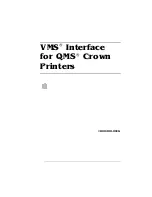
Table 4-5 RDF States
(continued)
Description
Status
RDF had been running with Update On, a Shared Access NonStop
SQL/MP or SQL/MX operation was detected, and all updaters have
completed their shutdown. Note, you must consult the RDF LOG for
either the RDF event 905 or 908 to determine if it is safe for you to
perform the DDL operation on the backup system.
Update NSA Stopped
The monitor is either stopped or is running but unable to respond.
The latter situation can happen for several reasons, such as the
STATUS RDF command having been issued from the backup system
when the Expand connection to the primary system is done. Another
example of this can happen as a result of a STOP RDF, REVERSE
operation that includes a REVERSE trigger that starts RDF with the
WAIT option. If this state persists and if Expand is up, then you
should check the status of the Monitor via a TACL status command.
If the monitor is gone but the other RDF processes are still present,
then the process was probably either manually stopped from TACL
or perhaps is was stopped by a double CPU failure. If you can confirm
that the monitor is stopped and the other RDF processes are running,
you should manually stop all surviving RDF processes by issuing the
following TACL command on both the primary and backup systems:
STATUS *, PROG $SYSTEM.RDF.*, STOP. This example assumes the
location of the RDF software is $SYSTEM.RDF.
* Monitor Unavailable *
Main STATUS RDF Display
The rest of the display provides current information about each RDF process configured.
For extractors, receivers, and image trails, the configured ATINDEX value is displayed in
parentheses following the object name. In the preceding example, the extractor $REXT0 and
receiver $RRCV0 are associated with the MAT, while the extractor $$REXT1 and receiver $RRCV1
are associated with auxiliary audit trail AUX01.
Because of insufficient space, however, ATINDEX values are not displayed explicitly for updaters.
To determine the ATINDEX value of a particular updater, see the ATINDEX value of the updater's
specific image trail.
In this example, a monitor process and two extractor processes are configured on the primary
system, and two receiver processes and three updater processes are configured on the backup
system. For each process, the following items appear, indicated by column headings near the
top of the display:
•
RDF Process
identifies the type of process. Notice that each updater process is identified
by the name of the primary volume the updater is protecting and the corresponding volume
on the backup system. In this example, each volume being updated on the backup system
has the same name as the corresponding volume on the primary system (for example, updates
to the volume $DATA07 on the primary system are replicated by the updater process $RUPD2
to the volume $DATA07 on the backup system).
•
Name
denotes the name assigned to the process.
•
RTD Time
specifies the current RDF time delay (RTD) value for the extractor process,
receiver process, and all updater processes. These values can help you determine how far
behind the applications each process is running.
In every audit trail, there are different timestamps that are observed by the extractor reading
that trail. The RTD value of an extractor corresponds to the difference between the last
modification timestamp of the latest audit trail file in the audit trail being read by the extractor
and the latest timestamp that extractor encountered within the audit trail. The extractor also
stores the latest timestamp taken from the audit trail in each audit record, which is then
defined as an image record.
114
Operating and Monitoring RDF
Содержание NonStop RDF
Страница 68: ...68 ...
Страница 186: ...186 ...
Страница 260: ...260 ...
Страница 278: ...278 ...
Страница 284: ...284 ...
Страница 290: ...290 ...
Страница 308: ...308 ...
Страница 322: ...322 ...
Страница 336: ...336 ...
Страница 348: ...348 ...
Страница 464: ...464 ...
Страница 478: ......
















































